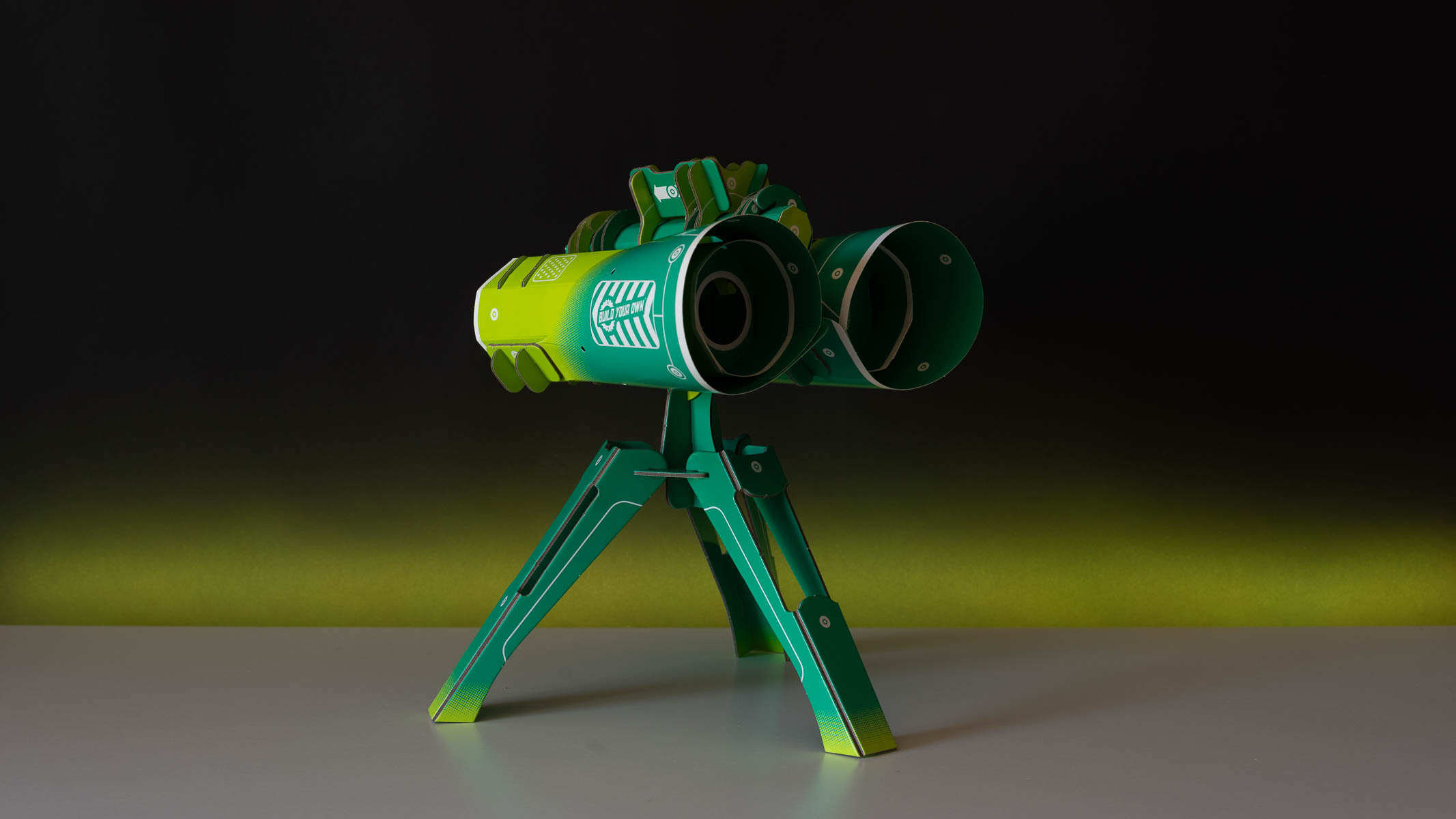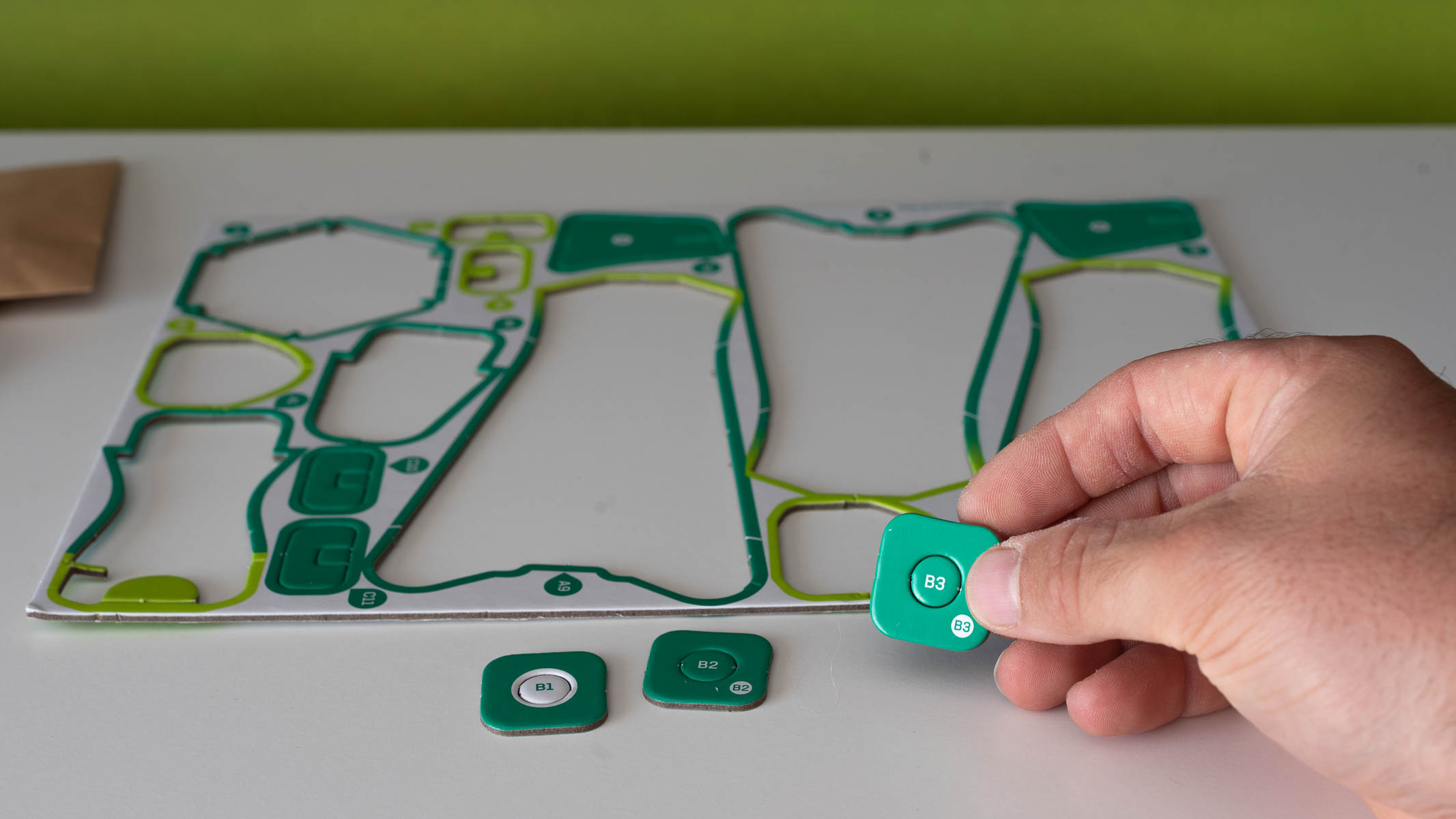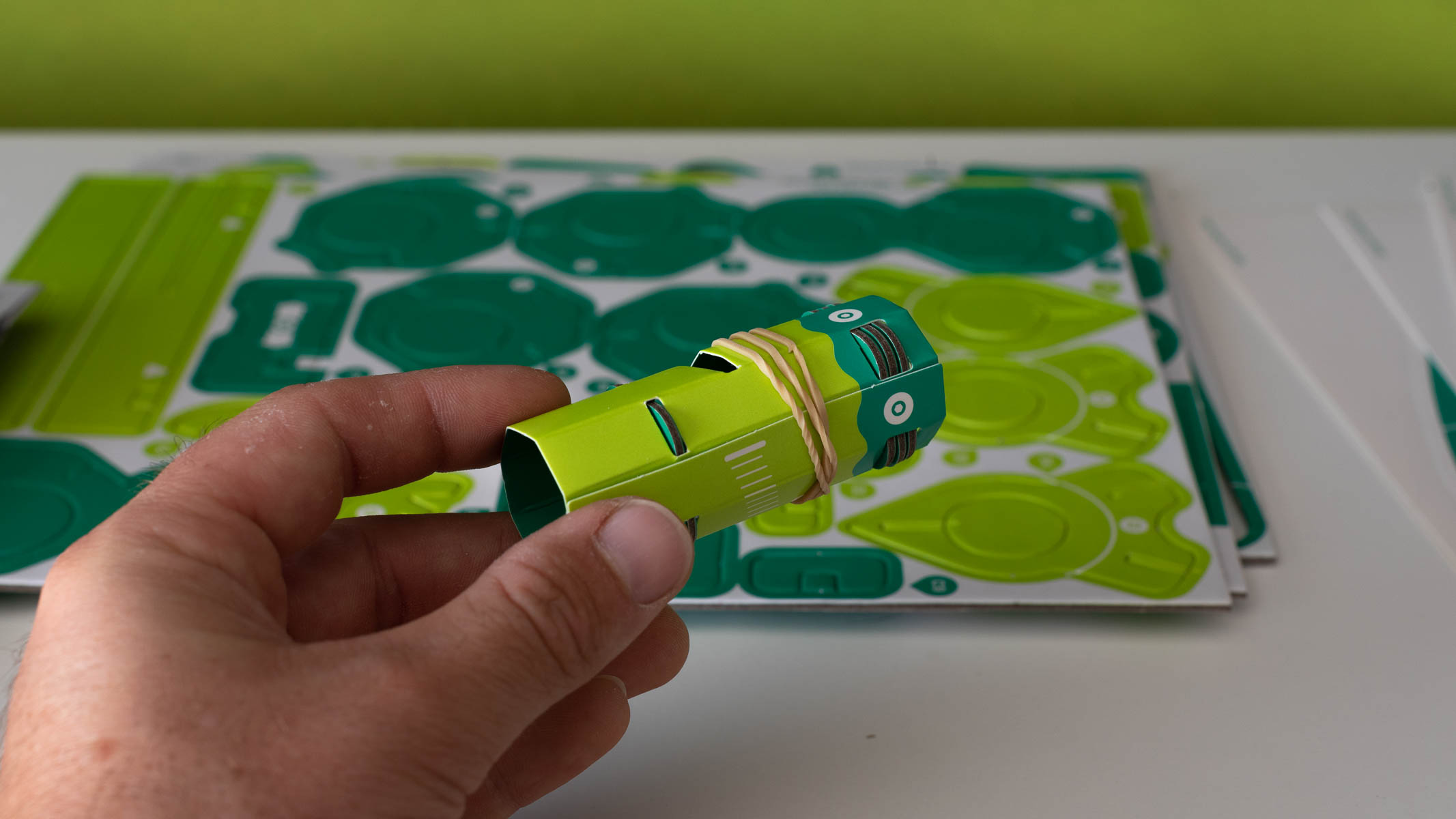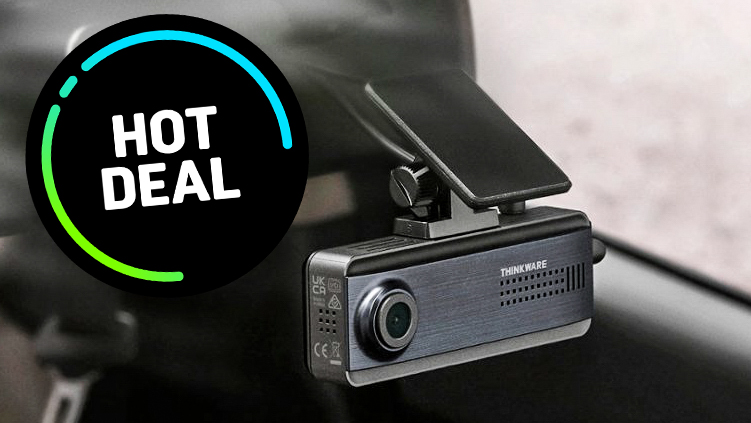I made my own binoculars... out of cardboard!
This DIY build your own binoculars kit is eco-friendly, inexpensive, and fun to make at home

A good pair of binoculars can transform your experience of the outside world. They make birding easy, can be a viable alternative to telescopes for stargazing and are fun to take with you in the car spotting planes, trains, or rare automobiles. But with the ongoing cost of living crisis binocular prices are at an all-time high with production costs, materials and shipping costs driving cost higher and higher. That’s where the Build Your Own Binoculars kit, from Buildyourownkits.com, comes in.
Made from cardboard everything about this DIY binocular kit is eco-friendly. The packaging and binoculars themselves are made from recycled cardboard and after just an hour or so of construction they’re ready to use. This is an ethical solution for anyone wanting to get a pair of inexpensive binoculars and full of family fun at the same time as it can be put together in just over an hour with little ones following a comprehensive, but not complicated, set of instructions. At £20 RRP (UK price) they’re an ideal gift for younger users, aimed at flourishing STEM education (Science, Technology, Engineering and Mathematics).
Of course, these are not quite in the same league as real binoculars. We have separate guides to the best binoculars and, if money is tight, the best budget binoculars.
There’s not a lot we don’t like about this kit, from its eco-friendly mess-free design to the STEM education incentive, even the optics work well in daylight and the binoculars even have usable and adjustable focus which you’ll build entirely from the flat-pack, pop-out parts in the kit. Of course, being made of cardboard they’re not super durable and while a light shower may not have any effect on them, anything heavier will see them warping.
The great thing about this kit is that they’re so reasonably priced that even if the young stargazers pinball off onto a brand new adventure, leaving behind these binoculars to gather dust in the future, the entire assembly is made from recycled materials and the fun in making the binoculars can’t be taken away. Buildyourownkits.com sells multiple other kits too, including kits to make telescopes, microscopes, plane launchers, even a pinball machine.
How they are assembled
1. You assemble one piece at a time
Open up the instructions and lay out your sheets of parts. Each part is held on a card with a few pieces of uncut cardboard.
Get the Digital Camera World Newsletter
The best camera deals, reviews, product advice, and unmissable photography news, direct to your inbox!

Just pop out the numbered parts with your fingers corresponding to the relevant part on the instructions. The manual will help guide you through the process of forming each eyepiece, the focusing assembly, and the storage tripod in sections.
2. Assembly hacks
We found it easier to hold together the eyepiece assembly with a rubber band because the cardboard kept opening up when we set it down to one side (something you’ll need to do as you move through assembly stages).

A piece of tape would also suffice, anything to stop the eyepiece opening up and lenses scattering over the table. Keep left-over materials ready for recycling
3. Recycle!
Because the kit is made with recycled materials, you can gather up any leftover pieces from the cards and recycling them afterwards. It’s mess-free in terms of requiring no glue or other adhesives, but there will be a fair few slits of cardboard left over from popping out the pieces, so set them to one side and keep an eye on children who like to mouth objects, or that are younger than eight.
What are our binoculars like?
The binoculars perform well under daylight conditions. The focusing assembly proves surprisingly useful and is smooth to operate considering we constructed it just minutes earlier with nothing but folded cardboard and plastic lenses. The view is soft, especially around the edge of the image circle, but towards the centre it’s bright and sharp. There are, of course, no lens coatings so flare is an issue and bright objects like white cars should be steered clear of as the brightness is magnified in the binos.

Overall, though, for the money and the fun of building them, we’d recommend this build your own kit to anyone who likes to build things, or is into science or engineering. Young children should be supervised, and those that struggle with motor function may require support to piece together the two eyepieces and the focusing assembly towards the end of the build.
There are also other manufacturers of build your own kits out there, such as the Binoculars Craft Kit from Orientaltrading.com and Colorations Decorate Your Own Binoculars set from Really Good Stuff, but we think the Build Your Own Binoculars kit from Buildyourown.com is about the best out there because they’re in-depth enough to encourage learning, pretty enough to carry round, but still inexpensive.
Read more:
• Best binoculars
• Best budget binoculars
• Best night vision goggles
Jase Parnell-Brookes is an award-winning photographer, educator and writer based in the UK. They won the Gold Prize award in the Nikon Photo Contest 2018/19 and was named Digital Photographer of the Year in 2014. After completing their Masters Jase has spent a good chunk of two decades studying and working in photography and optics shooting and writing all over the world for big-name brands and media outlets. Now the Channel Editor for Cameras and Skywatching at Space.com their speciality is in low light optics and camera systems.

